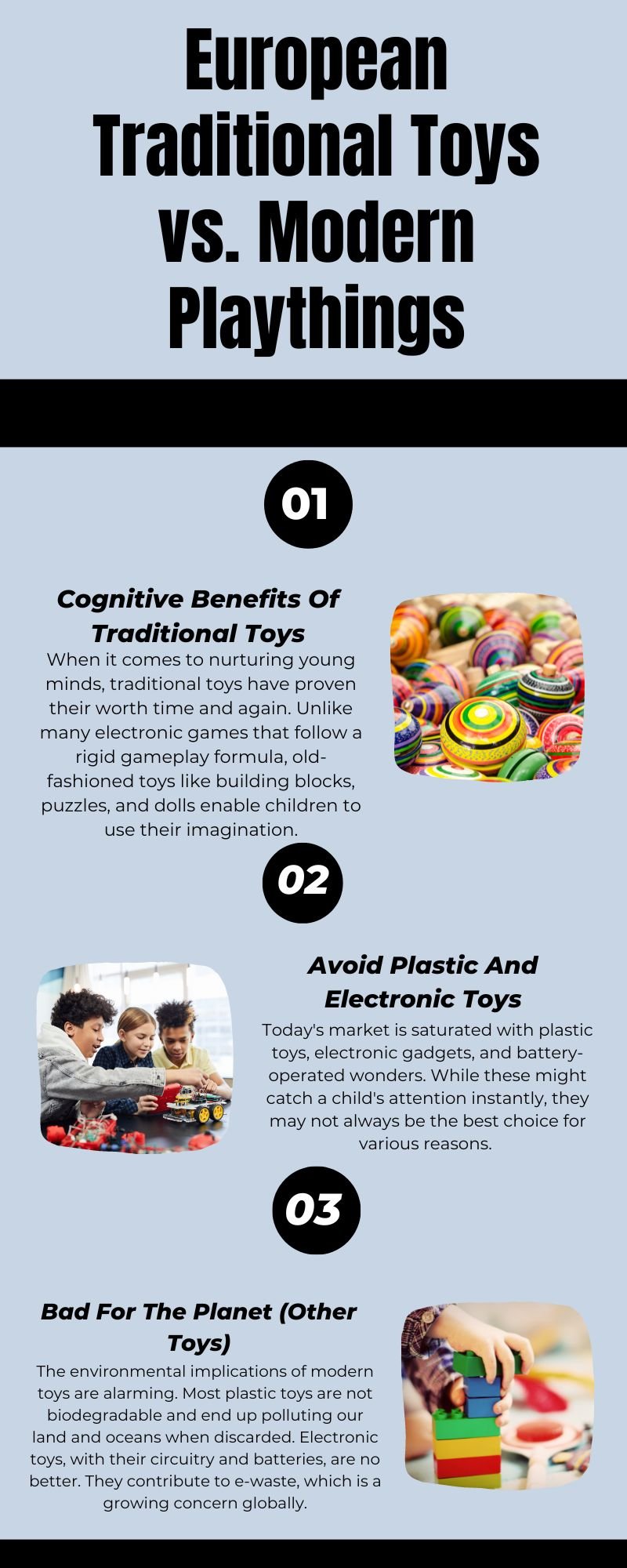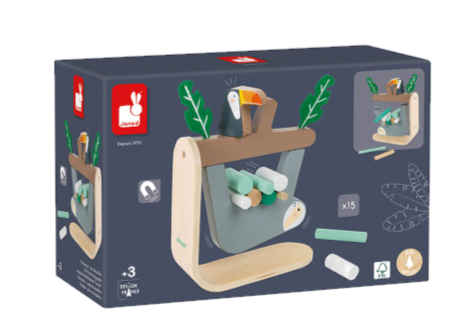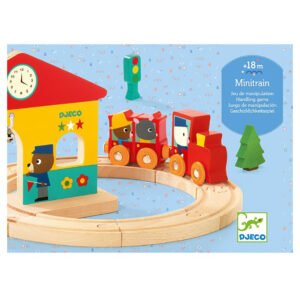In a world where the newest superheroes, plastic toys, electronic gadgets, and video games are becoming increasingly popular, European traditional toys hold a unique space that many are starting to appreciate. These toys, often made of wood and designed with a distinct old-world charm, offer more than just aesthetics. Let’s delve deep into understanding the ‘pros and differences’ between these traditional playthings and the modern alternatives.
Cognitive Benefits Of Traditional Toys
When it comes to nurturing young minds, traditional toys have proven their worth time and again. Unlike many electronic games that follow a rigid gameplay formula, old-fashioned toys like building blocks, puzzles, and dolls enable children to use their imagination. They provide an open-ended play experience, encouraging creativity and out-of-the-box thinking.
Furthermore, learning toys, specifically the wooden variants prominent in Europe, require tactile manipulation. This hands-on approach promotes the development of fine motor skills and cognitive functions. For instance, arranging wooden blocks into a tower or setting up a railway track demands focus, patience, and problem-solving skills – all vital for a child’s growth and education.
Engaging with European traditional toys, one immediately notices the lack of plastic. The continent’s storied history of crafting toys from natural materials makes it a treasure trove of no-plastic playthings.

Avoid Plastic And Electronic Toys
Today’s market is saturated with plastic toys, electronic gadgets, and battery-operated wonders. While these might catch a child’s attention instantly, they may not always be the best choice for various reasons. Electronic toys often leave little room for imagination as they come with pre-set sounds, lights, and actions. The child becomes a mere participant rather than the creator of their play experience.
Plastic toys, on the other hand, raise concerns both in terms of child safety and environmental impact. They can contain harmful chemicals and are not as durable as wooden or fabric toys. Over time, these plastic playthings can break, leading to sharp edges that pose risks to children.
Bad For The Planet (Other Toys)
The environmental implications of modern toys are alarming. Most plastic toys are not biodegradable and end up polluting our land and oceans when discarded. Electronic toys, with their circuitry and batteries, are no better. They contribute to e-waste, which is a growing concern globally.
European toys, especially the traditional ones, offer a sustainable alternative. Made from wood and other natural materials, these toys have minimal environmental impact. When they’ve outlived their play life, they return to the earth, completing a natural cycle.
A noticeable characteristic of traditional toys is their enduring quality.
Durable Material (Traditional Toys)
Durability is synonymous with European toys. Crafted with care, often by hand, these toys stand the test of time. Wooden toys, in particular, are robust and can withstand the rough handling that children often subject them to. As opposed to many plastic toys that might break or crack, wooden playthings last longer, often becoming cherished family heirlooms.
 Corolle – Bébé bath – Calypso$44.95
Corolle – Bébé bath – Calypso$44.95- Sale Product on sale
 Janod – Sloth game
Janod – Sloth game$24.95Original price was: $24.95.$10.00Current price is: $10.00.
Based On Education And Learning (Traditional Toys)
One cannot emphasize enough the educational value of traditional toys. Without the distractions of flashing lights and electronic sounds, children can focus on the fundamental principles of play. They can grasp concepts of geometry, physics, and even storytelling through these toys. From building structures with wooden blocks to crafting stories with dolls, the opportunities for learning are vast and varied.
The charm of traditional European toys is not just in their form or function but also in their creation.
Made With Passion (Traditional Toys)
Traditional toy-making is an art. Artisans pour their heart and soul into crafting each piece, ensuring every detail is perfect. This passion is palpable in every toy, making them more than just playthings. They are works of art, a testament to the craftsperson’s dedication and love for the trade.
Can Keep Toys In The Family And Last Longer
Many families have tales of toys passed down through generations. A carved wooden horse or a hand-stitched doll often holds memories of grandparents and great-grandparents. This longevity is not just a testament to the toy’s durable material but also its timeless appeal. In an age where the latest superhero or video game becomes obsolete within months, traditional toys offer a constant, reminding us of the enduring power of simple play.
Fostering Real-world Interactions
In the digital age, where screens often dominate playtime, traditional toys present an avenue for genuine human interaction. Playing with traditional toys often requires kids to communicate, negotiate roles, and collaborate with their peers or family members.
A game of marbles, for instance, necessitates understanding rules, waiting one’s turn, and appreciating the skills of others. Such interactions, rooted in the real world, teach children vital social skills. They learn about sharing, understanding emotions, and building relationships, essential components of human life often missing in solitary electronic play.
Enhancing Sensory Development
European traditional toys, especially tactile ones like wooden puzzles or fabric dolls, offer a rich sensory experience. These toys, with their varied textures and forms, stimulate multiple senses in children.
For a toddler, running their fingers over a wooden toy, feeling its weight, its coolness or warmth, and even its unique smell, is a comprehensive sensory lesson. These interactions are essential for sensory development and cannot be replicated by electronic toys, which often cater predominantly to sight and sound. Traditional toys challenge children to explore and understand the world around them, using all their senses.
Preserving Cultural Heritage
European toys often come with a story, a history that dates back generations. They are not just playthings but a reflection of the continent’s rich cultural heritage. Whether it’s the design, the material, or the play method, each toy is steeped in tradition.
By playing with these toys, children get a glimpse into the past. They learn about craftsmanship, cultural values, and the evolution of play. It’s a way to connect them with history, making them appreciate the lineage and the stories that have shaped the world they inhabit today.
In conclusion, while modern toys have their appeal, European traditional toys offer unparalleled benefits. From cognitive development to environmental sustainability, they cover all bases. As we make choices for our children, it’s essential to consider what these toys bring to the table – a blend of fun, learning, and timeless charm.

